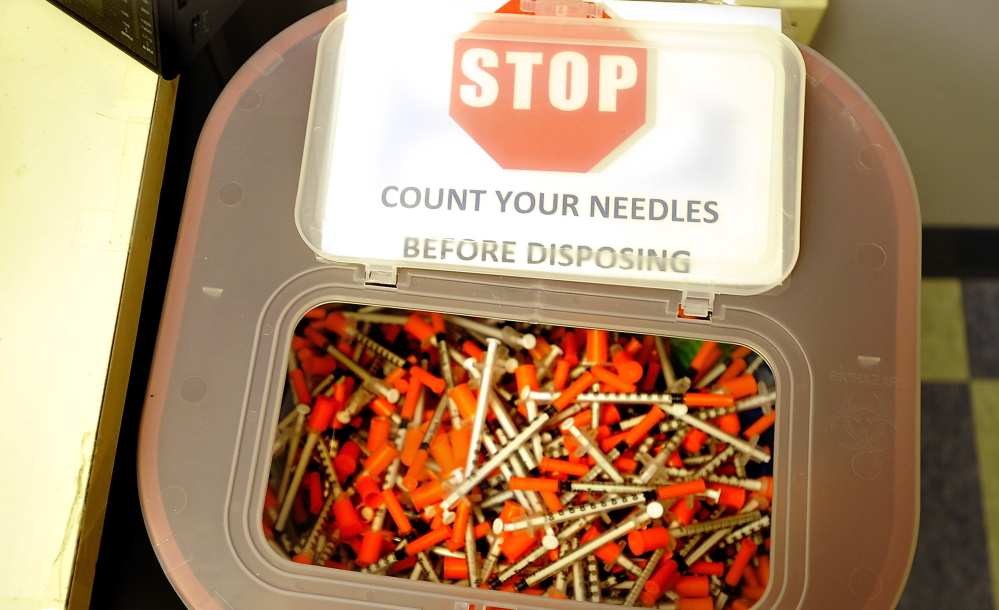Rural poverty and raging addiction conspired to bring nearly 200 new cases of HIV to Austin, Indiana, giving the small town on the edge of Appalachia a higher rate of that disease than any country in sub-Saharan Africa.
The outbreak, which occurred roughly from December 2014 to last summer, is now contained following a massive public health effort, with 91 percent of the cases now engaged in care.
Ultimately, officials estimate, the outbreak will cost more than $100 million to treat, all of which could have been largely avoided for the price of some testing kits and hypodermic needles.
That should be a warning to Maine, where the same circumstances that caused the Indiana outbreak exist in many areas. In fact, four Maine counties – Kennebec, Somerset, Waldo and Washington – are among the most susceptible to a similar rash of new infections, according to a report produced earlier this year by the federal Centers for Disease Control and Prevention.
The report – based on overdose rates and painkiller prescription rates, unemployment and proximity to care, among other factors – is not a prediction that such an outbreak will occur here.
Maine, to its credit, is better prepared than rural Indiana, where there were no drug rehabilitation centers or infectious disease testing programs. Just one doctor served the town of Austin, where poverty is more intense than what we experience here.
Still, in Maine, just as it is throughout the U.S., the services that can help halt an outbreak are based in more populated areas.
Needle exchanges, for example, are available in Augusta, Bangor, Ellsworth, Lewiston, Machias and Portland.
While controversial, needle exchanges are undeniably effective in stopping the spread of blood-borne diseases. Indeed, the new cases in Indiana were attributed to intravenous drug users who shared needles.
L.D. 1552, which should have provided support to new and existing needle exchanges in Maine, was passed last legislative session, but received no funding.
That leaves a lot of the state uncovered by needle exchanges and accompanying outreach and education efforts, and the ones that are available serve a population that cannot afford to travel.
In addition, there are many Mainers in vulnerable populations that don’t have insurance, or don’t know that they may have a communicable disease, many of which are asymptomatic for months or years.
That has no doubt contributed to the recent rise in the number of cases of hepatitis C.
There has also been a sharp increase in the incidence of hepatitis B this year; 15 cases were reported between Jan. 1 and May 16, while there were no cases during the same period in 2015.
Those increases have affected a small number of Mainers, but as the catastrophe in Indiana showed, given the right circumstances, those numbers can rise exponentially.
State health officials are promoting the “no-cost” hepatitis C screenings available in many counties, and improving public education for patients and awareness among primary care doctors.
That’s the right approach, but it won’t do much good for people who aren’t near screening sites, or who don’t have a doctor.
To be successful, prevention, treatment and outreach efforts have to reach into every corner of the state. Otherwise, one or two cases can turn into 20.
It happened in Indiana, and we’d be fools to think it can’t happen here.
Send questions/comments to the editors.


